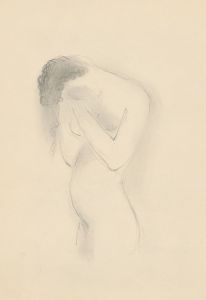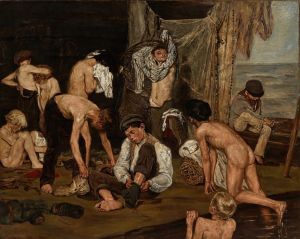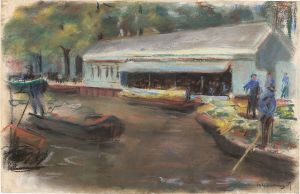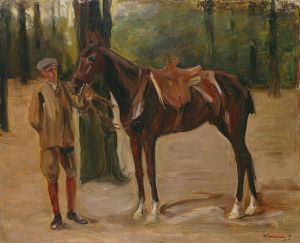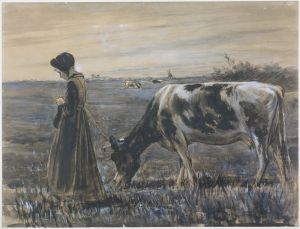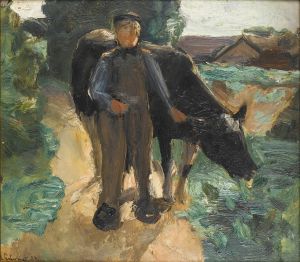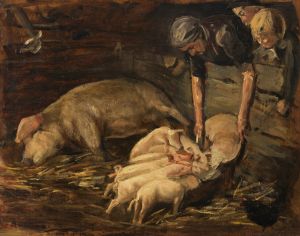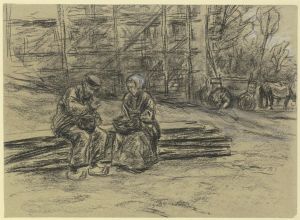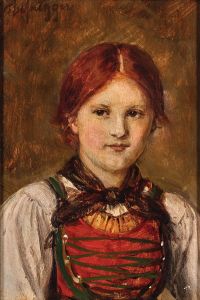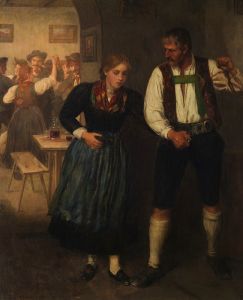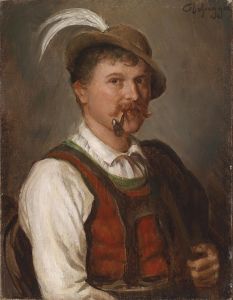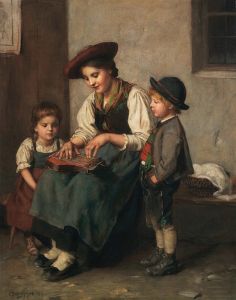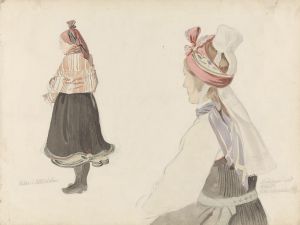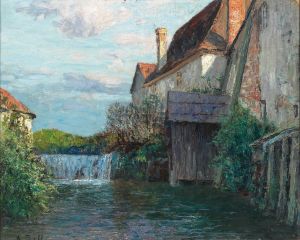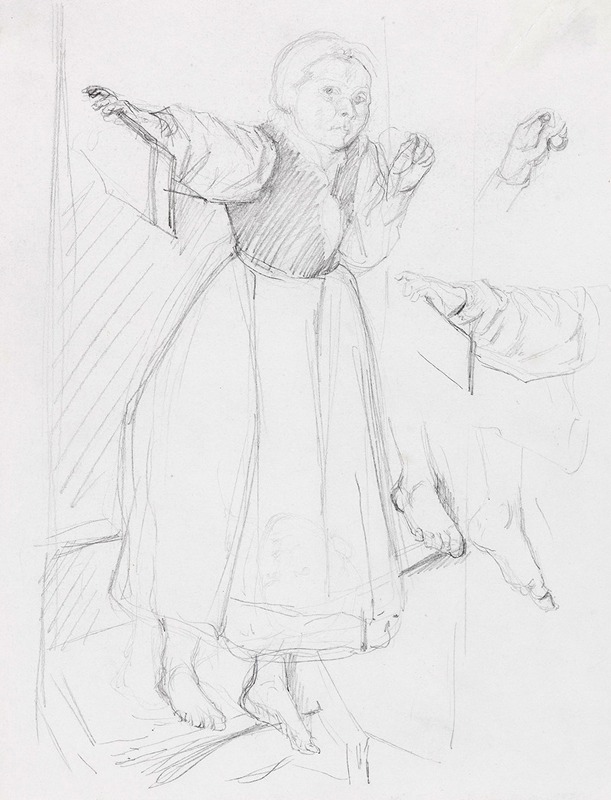
Tiroler Mädchen, auf einer Stufe stehend
A hand-painted replica of Max Liebermann’s masterpiece Tiroler Mädchen, auf einer Stufe stehend, meticulously crafted by professional artists to capture the true essence of the original. Each piece is created with museum-quality canvas and rare mineral pigments, carefully painted by experienced artists with delicate brushstrokes and rich, layered colors to perfectly recreate the texture of the original artwork. Unlike machine-printed reproductions, this hand-painted version brings the painting to life, infused with the artist’s emotions and skill in every stroke. Whether for personal collection or home decoration, it instantly elevates the artistic atmosphere of any space.
Max Liebermann was a prominent German painter and printmaker, associated with the Impressionist movement. He was a leading figure in the Berlin Secession and played a significant role in the development of modern art in Germany. Liebermann's work is known for its loose brushwork, vibrant light, and focus on everyday scenes.
"Tiroler Mädchen, auf einer Stufe stehend" (Tyrolean Girl, Standing on a Step) is one of Liebermann's paintings that reflects his interest in capturing the simplicity and beauty of rural life. While specific details about this particular painting are limited, it is consistent with Liebermann's broader body of work, which often depicted scenes of rural and working-class life with a sense of realism and empathy.
Liebermann was born in Berlin in 1847 and studied art in Weimar, Paris, and the Netherlands. His early works were influenced by the Dutch Masters, particularly Frans Hals and Rembrandt, which is evident in his use of light and shadow. Over time, Liebermann's style evolved, and he became associated with the Impressionists, adopting a lighter palette and more spontaneous brushwork.
Throughout his career, Liebermann was drawn to scenes of everyday life, often depicting farmers, laborers, and children in natural settings. His work is characterized by a focus on the human figure and an interest in capturing the effects of light and atmosphere. "Tiroler Mädchen, auf einer Stufe stehend" fits within this context, as it likely portrays a young girl from the Tyrol region, emphasizing the simplicity and charm of rural life.
Liebermann's work was well-received during his lifetime, and he became a central figure in the German art scene. He was a founding member of the Berlin Secession, an association of artists who sought to break away from the conservative art establishment and promote modern art. Under his leadership, the Secession became a platform for contemporary artists, and Liebermann's influence helped shape the direction of German art in the early 20th century.
Despite his success, Liebermann's career was not without controversy. As a Jewish artist, he faced increasing anti-Semitism in Germany, particularly during the rise of the Nazi regime. In 1933, he resigned from the Prussian Academy of Arts in protest against the Nazis' cultural policies. Liebermann passed away in 1935, leaving behind a legacy as one of Germany's most important Impressionist painters.
"Tiroler Mädchen, auf einer Stufe stehend" is a testament to Liebermann's skill in capturing the essence of his subjects with sensitivity and realism. While specific information about this painting is scarce, it remains an example of Liebermann's ability to convey the beauty of everyday life through his art. His work continues to be celebrated for its contribution to the development of modern art in Germany and its reflection of the social and cultural changes of his time.





